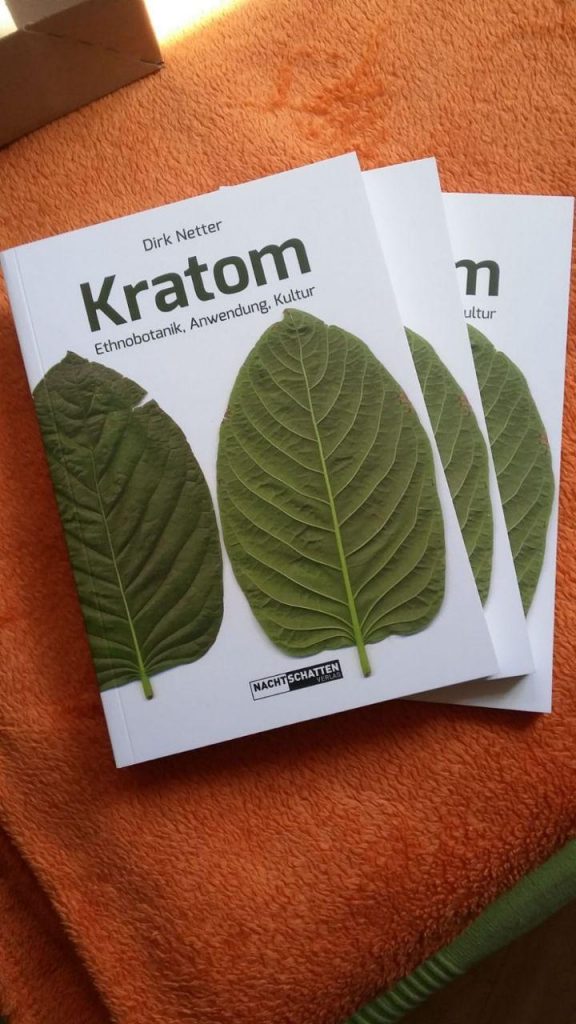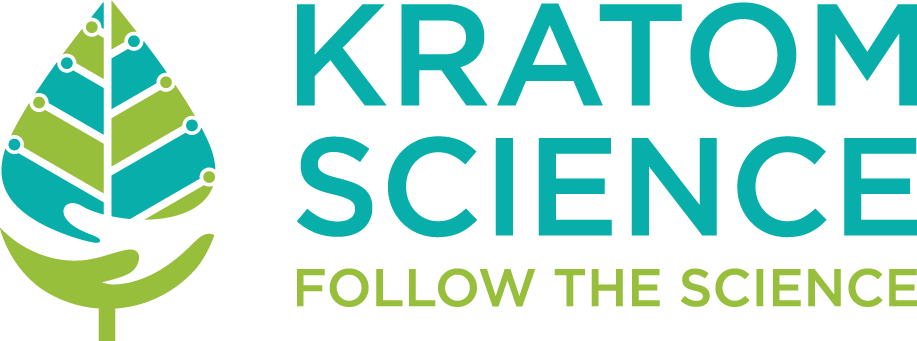
Dirk Netter is the author of the first major German language book on kratom. Kratom – Ethnobotanik, Anwendung, Kultur (English: Kratom – Ethnobotany, Application, and Culture) is soon to be released by Nachtschatten Verlag (Nightshade Press), a publisher from Switzerland.
In 2018, Netter founded HIPF, or Hochschulgruppe für interdisziplinäre psychedelische Forschung, translated to English: the Student Association for Interdisciplinary Psychedelic Research, at Philipps University of Marburg in Germany, where he studies. HIPF promotes sensible drug policy, the dismantling of drug prohibition propaganda and misinformation, and research into psychedelics and other plants such as kratom.
KratomScience: Please tell us about your personal history. How did it lead to you became interested in kratom?
Dirk Netter: All my life I was very interested in non-ordinary states of consciousness, of course I couldn’t name it that way when I was a child.
Living very much in the countryside, my other big interest was in plants and fungi, but I haven’t connected these two domains until I was a teenager. Around when I was 13 or 14 I stumbled upon the two German ethnobotanists called Christian Rätsch and Wolf-Dieter Storl. (I am quite sure some of the ethnobotanical/psychonautic geeks in your audience know them).
They introduced me to the wonderful world of psychoactive plants and how our ancestors and the first peoples used it in their culture and rituals.
Coming from a family of avid readers, I went to the local library (and the internet) and read all the books that I could get on that topic. When YouTube became a big deal around 2006(?) me and my friends were very entranced by the lectures of Terence McKenna and the whole gang of psychonauts. We had some experiences with plants and fungi, and these experiences led to some very profound insights.
Fueled by these experiences I decided to pursue a career in academia. I started to study sociology, geography and psychology, because I thought this will get me a sufficient scientific perspective to study the human use of psychoactive substances.
When I was doing a preliminary investigation for my masters thesis I found that there is no satisfactory German literature on kratom. It is my conviction that people need literature to assess the risk associated with taking psychoactive substances – and if we like it or not people will take these things. So there is a need to give them all the unbiased information that they need for harm reduction.
So I started to make a draft (which mainly consisted as an index of contents). At that point I was not sure how to publish it, but it felt right. Through a very lucky coincidence I came to know my publisher (and now friend) Markus Berger (you should look his books up as well!) of the Swiss Nachtschatten Verlag, (Nightshade Press).
He was interested from the first second on and said “Go for it. Do it right now.” So I did it and I think we are pleased with the outcome.
KS: You started a group called HIPF. HIPF seems to advocate for similar outcomes as the US kratom community: evidence-based drug policy, acknowledging that propaganda has led to attitudes and laws about drugs, etc. Tell us more about HIPF – When was the group founded, and what are some of your political goals?
DN: HIPF is an acronym for Hochschulgruppe für interdisziplinäre psychedelische Forschung. It can be translated as “Student Association for Interdisciplinary Psychedelic Research“. I initiated the group last year together with two fellow students. Since two months ago we are a legally registered association as well. We have a staff of 15 constantly involved people – sometimes 30 depending on how you count.
Our goals are, as you correctly said, to encourage the law-makers to revoke propaganda based decisions and replace it with well-thought-out and evidence-based measures. The public has been mislead by the propaganda of the failed “war on drugs” – and I think it is now time to get back to scientific facts. Every expert knows that the last decades of prohibition meant great harm to public health and inflated a really big black market in almost every part of the world. Drugs are often the driving force behind some of the ugliest wars in history – we can end this with smart politics.
As a student group we support psychedelic research, connect interested young scientists, and try to change the public view on these substances. We host our own weekly scientific course on psychedelics and organise lectures for the public. The last one we did with the ethno-botanist Christian Rätsch in a big auditorium on campus. There have been around 300-400 people, so we think there is a great interest in this topic.
Besides that we also promote the psychedelic culture. We have been co-hosting psy-trance parties, public viewing of psychedelic movies and we have talking rounds about the individual psychedelic experiences.
KS: Tell us about your book Kratom: Ethnobotany, Application, and Culture… And you did say the publisher is interested in an English translation?
DN: It’s the first real German book on kratom. I focused on the whole topic. That means you don’t have to read the whole book if you are only interested in harvesting or safer use – although it is written in a way that you can read it almost like a novel.
There is obviously a whole chapter about the botany of kratom. It tells you where you can find it, what it needs to flourish and tells you a lot about the kratom alternatives. Mostly about the other Mitragynas, Combretum and so on.
Next chapter is about the indoor cultivation of Kratom and how to get seeds or cuttings.
There is a really large chapter about the history of kratom from the discovery of kratom by the first European explorers to the present day. I have used some of the diaries of Pieter Korthals (the discoverer of Kratom), I was in contact with a lot of museums and have used a quite a bunch of very rare books to back my findings.
In the next chapters I present a lot of recipes, safer use information and the chemistry of the kratom alkaloids. Also there is a chapter about the medicinal use of its ingredients.
The Last Chapter is about the legal situation of kratom in the German speaking countries (Germany, Austria and Switzerland) as well as the other European countries.
I also covered the much-asked topics of Kratom and driving and how kratom is detected in drug screenings. The last point is a very tough one because there are fights especially on /r/Kratom whether a false positive on opiates is possible because of Kratom.
Everything is backed up by scientific findings. Wherever possible I provided all the quotes from the scientific articles. The bibliography is quite large and will be a good starting point for every researcher.
As soon as the book is in stores (I think it will be any time next week) I will launch the website mitragyna-speciosa.de. There will be the complete bibliography to download (for nerds) and all the pictures in high resolution as well as many extras. Everything completely free.
My publisher is interested in an English translation. Unfortunately I have no time (nor real qualification) to do this on my own. So If you are a professional translator feel free to contact my publisher. It’s the Swiss “Nachtschatten Verlag”, you can find them on nachtschatten.ch or write them on [email protected]
I have no power of decision on this, so keep in mind that I can not finally decide who can do this.
But I would really appreciate an English translation – the largest part of this book is not specifically written for a German audience.
Maybe we will release the second edition in English. Since 50 percent of the first edition are already pre-ordered I think there will be a demand of a further edition. While I was editing the book there was so much stuff I couldn’t add to the book, so the next edition will be even more detailed and expanded.
KS: Is Kratom legal in Germany?
DN: Yes it is completely legal for now. But vendors can not advertise it as a product that has any medical or cosmetic value. So most of the time you will get it as dye or as incense, with a label on it that says “not for human consumption”.
But to be honest, i am afraid there is a chance that it will be prohibited eventually. Germany is still not that liberal in comparison to other European countries like the Netherlands or Portugal.
So far we luckily had no deaths or accidents in association with Kratom that became largely public, as soon as that changes there will be bad press – same happened to Salvia divinorum some 10 years ago.
Fortunately there is an attempt to found a Kratom Association comparable to the AKA. Some vendors and kratom users want to regulate the sales of kratom and to gather funding to challenge the possible ban. If you are interested in that topic as well, then let me know. I am involved in funding this association, but we are still at the very beginning, and there is not much to tell other than you already know.
KS: How many Germans know about kratom? How many Germans use kratom? And where do Germans usually acquire kratom – in shops or online?
As far as I know there are no official numbers on how many people use Kratom. But recently i noticed a significant rise in the number of kratom vendors and postings about kratom in social media.
If you take my book as an indicator, I assume that three years ago no publisher would have accepted the manuscript because kratom was so [unknown] – and now we have sold half of the first edition just in pre-sales, even before the book was delivered to the book stores.
The majority of Germans usually buy kratom online. I don‘t think it is impossible to buy kratom in a head shop, but that would be very uncommon. Whilst in North America a lot of people seem to buy it in pre-fabricated capsules – almost nobody does this here. Some people make their own capsules, but everybody is ordering the grounded powder.
The ordered kratom packages are very discreet, so you can not distinguish a kratom order from buying a book for instance. This is because buying kratom online would, unlike in the US, be regarded as a dangerous drug and you possibly wouldn‘t want your neighbours to know.
KS: What is the general attitude about drugs in Germany? Is the history of US demonizing of drugs an influence on other countries in the global West?
The general situation is that the consumption of any substance is legal. Which means that one can go to the hospital to treat an overdose without having the fear of being arrested.
But the possession, passing on, and sale of any substance is punished. Usually the sentences are not that harsh compared to other countries. The maximum sentence for selling drugs in a gang-like way is at 15 years. If you just have something for your personal need, it cannot be higher than 5 years.
Cannabis for instance is handled a little different. Depending on the state you live in you can get away without any sentence (e.g. under 6 grams in the south of Germany and up to 15 grams in Berlin). But the whole thing is handled very arbitrarily, so the best advice is to not get caught.
If we are speaking about cannabis legalisation, then especially the younger generations are likely to be pro-cannabis. While Cannabis medicine is legal since 2011 there is an attempt to legalise it for [recreational] use. I think eventually it will be legal in Germany it’s just a matter of time, but that is not going to happen within the next 4 years.
As you mentioned the USA is playing a big role in the public view on drugs. Since some US States have legalised Cannabis it is viewed very differently even among some conservative politicians.
KS: I’ve noticed on Twitter you are growing kratom. How are your plants? Do you think it’s possible to grow a supply of kratom in cooler climates in greenhouses? We’ve heard of successful plants being grown in Costa Rica and warmer parts of the world near the equator, but so far not in the North.
DN: Yes you have seen it right, I am growing kratom plants. As I mentioned before, I am a great plant lover and couldn’t resist to grow this legal and powerful ethnobotanical gem.
I think it is possible to grow it in cooler climates. But you would need to heat your greenhouse up. The plants most definitely won’t survive temperatures below 5-10°C [41-50°F]. And certainly you will need artificial light (like LED). I live in the center of Germany and we don’t have very long days in winter. In December we have 8 hours of sunlight, in June we have 16. So the summer is perfectly fine for growing Kratom, but in winter you surely have to “make the days longer” for the plants. This problem increases as farther North you go.
But I know some people in the northern part of Germany that grow their own kratom. It works very well for them. Logically the important question is how much your consumption is. You can prune your trees down regularly, that will make the trees way more bushy. So your harvest will be better.
But coming back to your question. I think it will work very well to grow it in Costa Rica. What you need are the right temperatures throughout the year. But you don’t necessarily have to go as far as Costa Rica. Even in Florida the weather is sufficiently to grow Kratom. I have seen some fairly large kratom trees there.
There have been some rumours about the ban of kratom in Indonesia. I am sure you heard about that. I think if this is ever going to happen (I mildly doubt it) then there will be a lot of alternative places like the above mentioned. But also in Africa, India and South America there are some very suitable places to build kratom farms. All depending on the legislature of the kratom importing countries of the West – it only will be profitable if the USA and Europe are still importing kratom in 10 years.



